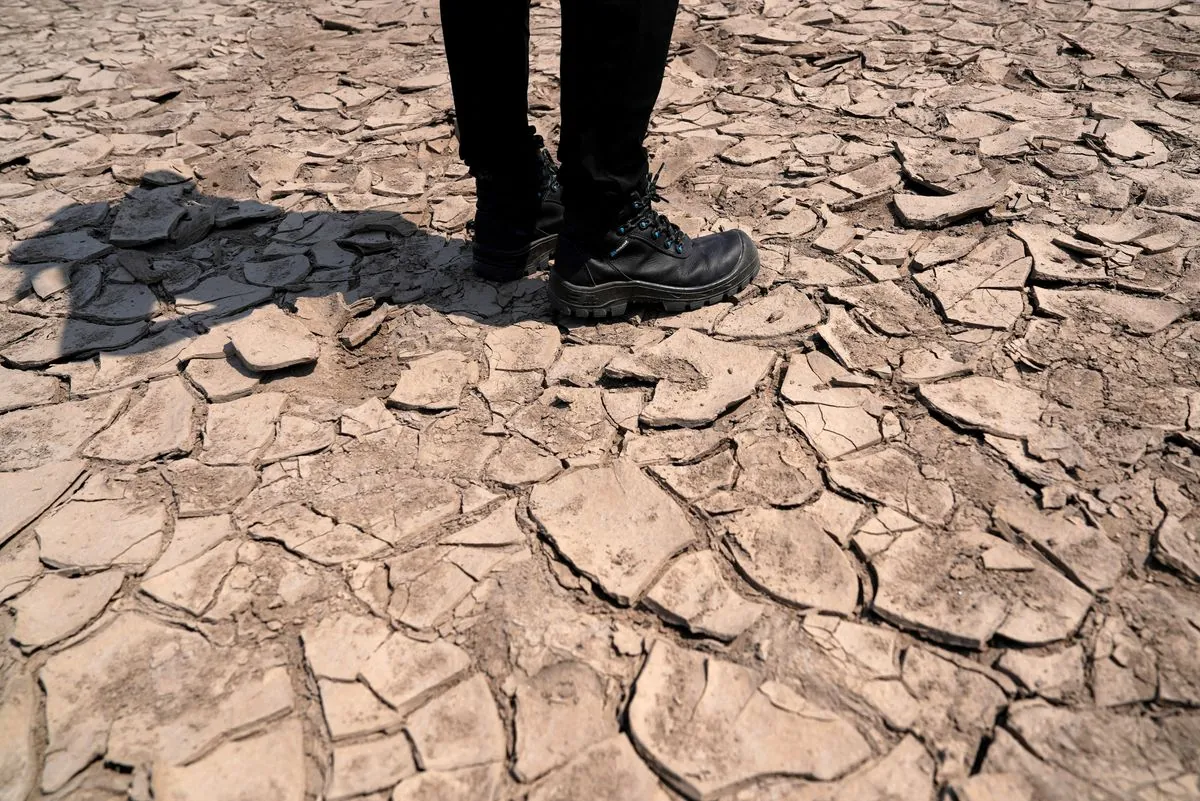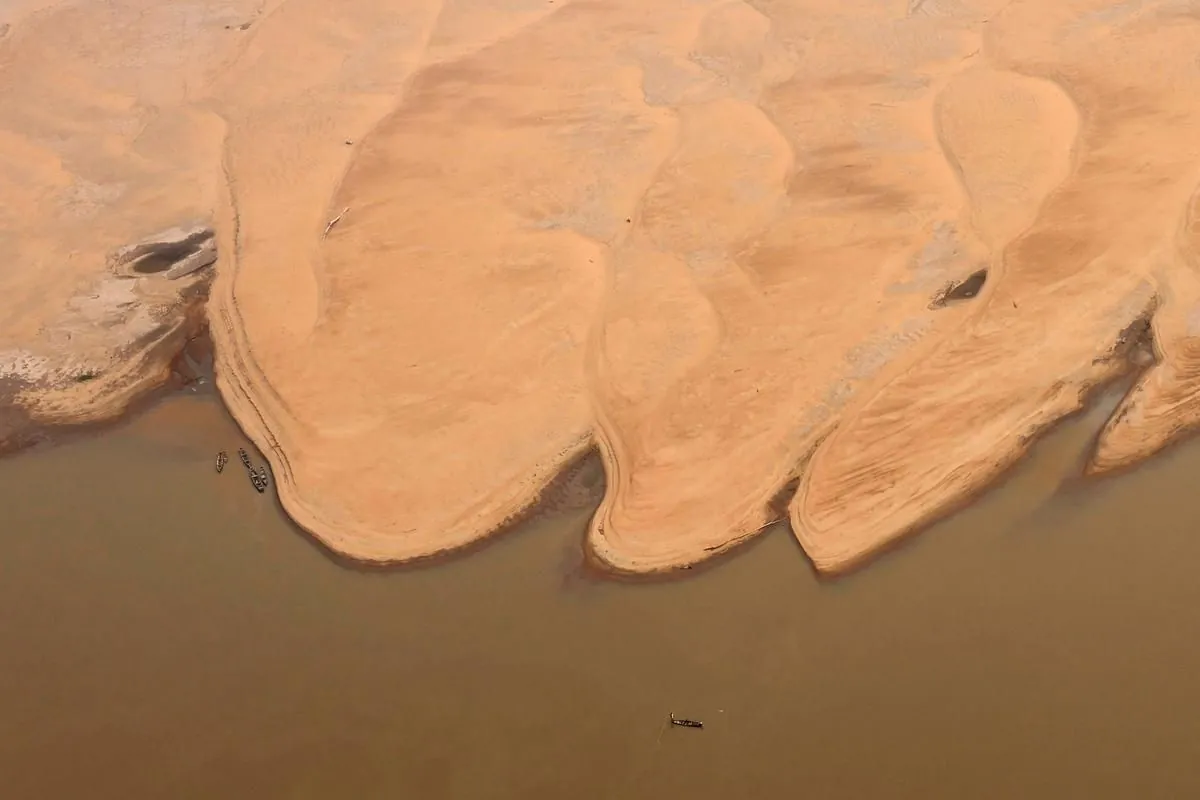Greenpeace Highlights Amazon Drought Crisis with River Protest
Activists place banner on exposed Solimoes riverbed, drawing attention to severe drought in Amazon. Second consecutive year of critical conditions impacts communities and wildlife in world's largest rainforest.

In a striking demonstration of environmental activism, Greenpeace Brazil members placed a banner on a newly exposed sandbank in the Solimoes River, a major waterway in the Amazon basin. The action, which took place on September 22, 2023, aimed to highlight the severe drought affecting the region for the second consecutive year.
The banner, bearing the question "Who Pays?", draws attention to the environmental consequences of climate change and global warming in the Amazon. Greenpeace attributes these issues to the continued use of fossil fuels worldwide. The Solimoes River, which contains a significant portion of the Amazon basin's fresh water, has experienced unprecedented low water levels, exposing riverbeds near the town of Manacapuru.

The drought's impact extends beyond the visible landscape changes. Local communities, particularly those relying on river transport, face significant challenges. Indigenous people, fishermen, and residents of floating houses are among the most affected. Romulo Batista, a spokesperson for Greenpeace Brazil, emphasized that these vulnerable communities are bearing the brunt of climate change consequences in the Amazon.
"We want to send a message that climate change is already affecting even the world's largest rainforest and drying up its rivers. It is the people who live outside the cities of the Amazon that are the ones paying the biggest price for this extreme climate event caused by the oil and gas industries around the world."
The environmental crisis has also taken a toll on the region's rich biodiversity. The Amazon basin, home to over 3,000 fish species and unique river dolphins, is experiencing alarming water temperature increases. On September 20, 2023, water temperatures near the sandbank reached 40 degrees Celsius, a level unbearable for many aquatic species. Observers reported numerous fish deaths and skeletal remains on the exposed riverbed.
This situation is particularly concerning given the Amazon's crucial role in global climate regulation. The rainforest, covering approximately 5.5 million square kilometers, produces about 20% of the world's oxygen and absorbs roughly 2 billion tons of CO2 annually. However, recent data indicates a 22% increase in deforestation over the past year, further exacerbating the region's environmental challenges.
As the Amazon faces this critical juncture, the need for global action becomes increasingly apparent. The drought's far-reaching impacts on both human communities and wildlife underscore the interconnectedness of climate change and ecosystem health in the world's largest rainforest.


































